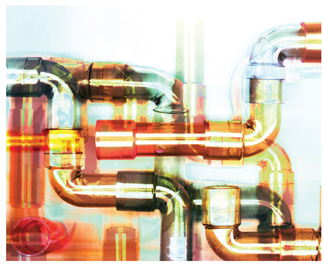 A major concern related to pipes and fittings is the potential for damage when they fail and leak. Chlorinated polyvinyl chloride, commonly referred to as "CPVC," is a thermoplastic used to produce pipes and related fittings. CPVC applications include water supply pipes, water-based heat transfer systems, and sprinkler systems and drain lines, in both commercial and residential buildings.
A major concern related to pipes and fittings is the potential for damage when they fail and leak. Chlorinated polyvinyl chloride, commonly referred to as "CPVC," is a thermoplastic used to produce pipes and related fittings. CPVC applications include water supply pipes, water-based heat transfer systems, and sprinkler systems and drain lines, in both commercial and residential buildings.
Since introducing the thermoplastic about 40 years ago, manufacturers have marketed CPVC components as less expensive (and easier) to install when compared to metal piping products, such as black iron pipe and copper.
With the growing popularity of CPVC and its adoption in building construction on an international level, the threat of damage from the failure of pipes and fittings has increased. It is therefore beneficial for claims professionals, adjusters specifically, to learn the basic properties of CPVC and how it fails so as to identify subrogation opportunities and recoveries involving these pipes and fittings.
Want to continue reading?
Become a Free PropertyCasualty360 Digital Reader
Your access to unlimited PropertyCasualty360 content isn’t changing.
Once you are an ALM digital member, you’ll receive:
- All PropertyCasualty360.com news coverage, best practices, and in-depth analysis.
- Educational webcasts, resources from industry leaders, and informative newsletters.
- Other award-winning websites including BenefitsPRO.com and ThinkAdvisor.com.
Already have an account? Sign In
© 2024 ALM Global, LLC, All Rights Reserved. Request academic re-use from www.copyright.com. All other uses, submit a request to [email protected]. For more information visit Asset & Logo Licensing.








